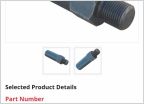-
Welcome to Tundras.com!
You are currently viewing as a guest! To get full-access, you need to register for a FREE account.
As a registered member, you’ll be able to:- Participate in all Tundra discussion topics
- Transfer over your build thread from a different forum to this one
- Communicate privately with other Tundra owners from around the world
- Post your own photos in our Members Gallery
- Access all special features of the site
Guide: Different Types of Lifts
Discussion in 'Suspension' started by csuviper, May 24, 2014.
Page 1 of 6
Page 1 of 6


 Camburg uniball maintenance
Camburg uniball maintenance Top Hat for 6112 on 2021 Platinum
Top Hat for 6112 on 2021 Platinum OE Cam tab removal
OE Cam tab removal Rear shock extender
Rear shock extender Bilstein 6112 which hardware
Bilstein 6112 which hardware Leveling kit or?
Leveling kit or?
